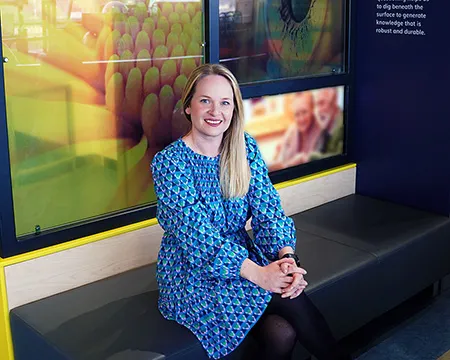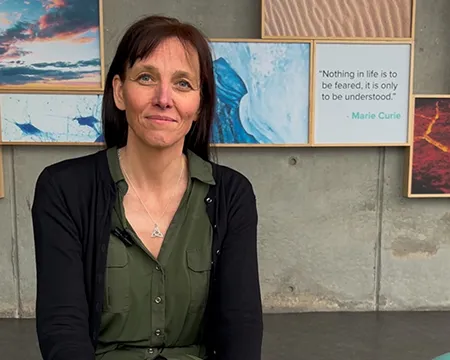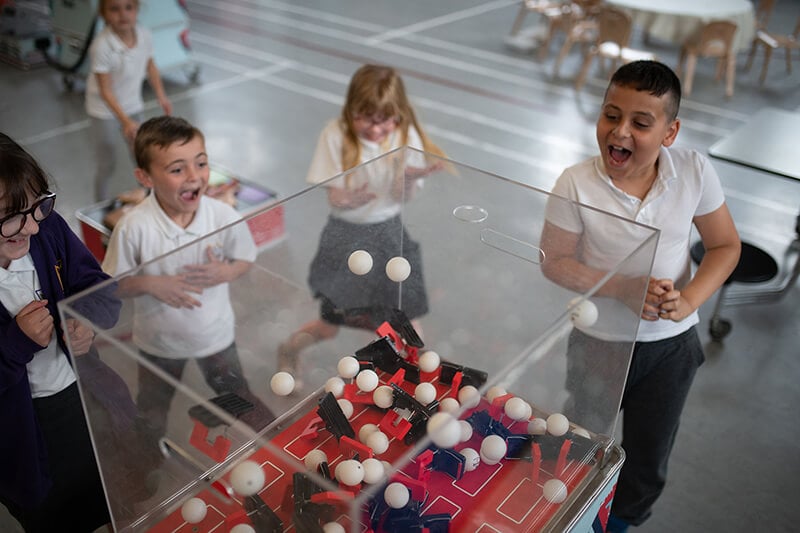The bee-auty of beekeeping

This year’s World Bee Day celebrated the diversity of bees and beekeeping systems. In this post, Nicole from Glasgow Science Centre meets two local beekeepers doing their bit for maintaining biodiversity.
Beekeeping since the beginning
Humans have been harvesting honey for thousands of years, there are even Stone Age cave paintings to prove it. The profession of beekeeping dates back at least 5,000 years - Ancient Egyptians kept hives and honey was even found buried in Tutankhamun’s tomb. Honey never spoils, so when some brave archaeologists tasted the 3,000-year-old honey, it was still good!
The modern buzz on keeping bees
Davy Hutton and Donna Hood are not pharaohs nor indeed cavemen, but two Renfrewshire beekeepers. Donna reminisces fondly about “gawping in complete wonder” at a honeybee she had captured in a jar in her grandmother’s garden as a child. Her fascination with bees wouldn’t gain traction until she attended a Beekeeping for Beginners course in Glasgow in 2015. Despite being a busy working mum with a myriad of pets Donna still found time to be a beekeeper. Davy connected with a local beekeeper through Facebook. This friend set him up with a hive and some occupants. Davy is a staunch environmentalist who has even given a home to hens rescued from a battery farm and a patrolling cockerel.
Donna received her bees from her mentor. She explains that most local beekeeper associations believe in promoting local bee stocks rather than importing bees from other regions that may carry disease. She adds: “Scottish bees are more likely to survive the next Scottish winter than bees from sunnier climates.”
Bees can be sent by post and are sold by weight, at 3,500 bees per pound. Which begs the question, just how many bees do Donna and Davy have? Donna says she has 40,000 over the summer. Davy has a busy, well established, self-sustaining single hive with thousands of bees. Davy laughs: “they can be nippy wee sweeties, so I try not to count them!”
Nippy wee bees
Nippy is one word for them. Beekeeping isn’t a lot of people’s idea of a good time, let alone having them so close to where you live. Davy’s hive lives in his back garden, about 50 ft away from his door. Donna has a large back garden with her own apiary and several hives.
It would have to be asked, with beehives literally so close to home, how often our beekeepers get stung? Donna has not been stung that often. There is some evidence that bees recognise faces and Donna suspects her ‘girls’ recognise her voice. Davy has only been stung on the odd occasion but had a ‘rogue colony’ (bees separated from the main hive). “These rascals chased us up and down the garden like heat seeking missiles!” he says. But Davy persevered and re-homed the dissenters in a remote location.
Honeybees do a 'waggle-dance'
Honeybees have a unique way of communicating with each other through series of looping and waggle movements, called a ‘waggle-dance’, which they use to tell the colony about the best sources of food. They are known to travel several miles away from the hive to search for nectar and pollen. Davy says: “they operate like an airport, they get their landing slot, and they return home from all directions at the same time every night.” A honeybee will visit between 50-100 flowers on a single trip, though they seem to visit only one type of flower at a time. As Donna explains, they are “efficiently filling up pollen baskets on their legs with one flavour per outing, known as floral fidelity.” This is also what gives their honey its own unique flavour.
Bees recognise each other through smell. Each colony has its own distinct scent so members can identify each other. Donna states: “each hive has a different temperament, some are laid back and calm and some are angry, that I call fizzy bees.” The hive’s residents work together, and each bee has its job whether it’s collecting pollen, feeding the brood or older bees teaching the young how to make honey.
Honeybees and other pollinators play a critical role in helping plants grow and survive, contributing to crop production and maintaining healthy ecosystems.
Further information
This blog post, written by Nicole Alexander from Glasgow Science Centre, is adapted from an article that first appeared in Glasgow Times in May 2022.
You may also be interested in...
Get creative and make some crafty flowers as you learn about bees and their importance in pollination. This GSC At Home video, 'Flower Fun', is most suitable for ages 5 and over.
Curious About: Our Planet
Find out more about bees and conservation at our digital science festival, Curious About: Our Planet






